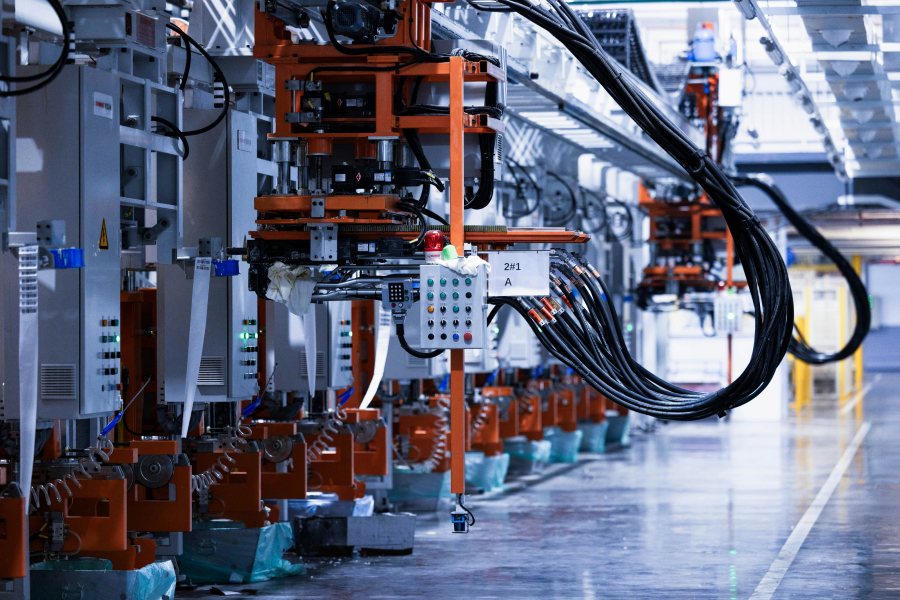The Business Case for Headless CMS in the Industrial Sector
3 min read ● Silk Team
What is a Headless CMS?
Before delving into its benefits, it’s essential to understand what a headless CMS actually is. Unlike a traditional CMS, which tightly couples the back-end (where content is created and managed) with the front-end (the website or application that displays it), a headless CMS decouples these layers. Essentially, a headless CMS acts solely as a content storage and distribution platform. It exposes content via application programming interfaces (APIs), allowing developers to retrieve and display it on any platform or device—websites, mobile apps, industrial IoT dashboards, kiosks, and more—without being limited by predefined front-end templates. This architecture is ideally suited to the diverse and often complex digital ecosystems of the industrial sector, where content must be delivered across multiple channels and integrated with numerous operational systems.
Why Industrial Companies Need a Headless CMS
Industrial operations often involve many stakeholders, from engineers and operators to customers and suppliers, all of whom require accurate and up-to-date information. Whether it’s product specifications, safety guidelines, training materials, or real-time data dashboards, the content is diverse and critical. Traditional CMS platforms can struggle to meet these requirements because they aren’t always flexible enough to deliver consistent experiences across different touchpoints or adapt quickly to changing technology or business needs. Additionally, industrial companies typically prioritize system reliability and security, areas where headless CMS solutions excel. Let’s explore the key benefits of a headless CMS in the industrial sector and demonstrate why it’s a strategic investment.
1. Flexibility for Multi-Channel Content Delivery
One of the key benefits of a headless CMS is its unparalleled flexibility for content delivery. Industrial companies often need to deliver content across a wide range of channels: corporate websites, mobile apps for field technicians, digital signage in factories, partner portals, or augmented reality (AR) interfaces for maintenance. With a headless CMS, content is created once and then published via APIs to any device or channel. This flexibility is crucial when industrial companies need to quickly evolve their digital presence or introduce new digital touchpoints without having to rebuild their content management workflows.
For example, an equipment manufacturer can maintain a single, centralized database of product manuals and safety guidelines and automatically distribute updates to its mobile maintenance app, customer service portal, and on-site kiosks, ensuring consistency across all platforms.
2. Improved Performance and User Experience
Speed is crucial, especially when industrial processes depend on up-to-date information. Legacy CMS platforms often rely on monolithic architectures, which can slow website responsiveness and introduce latency in content updates. By separating the content backend from the presentation frontend, a headless CMS allows developers to create fast, lightweight front-end applications tailored to user needs without the limitations of built-in CMS templates or themes. This improves page loading speed and a smooth user experience across all devices.
Additionally, industrial users, such as field technicians viewing manuals on their mobile phones, benefit from instant and reliable access to relevant content, minimizing downtime and errors.
3. Scalability to Support the Growth of Digital Ecosystems
Industrial companies are increasingly integrating digital technologies such as IoT sensors, predictive analytics, and machine learning into their workflows. These innovations exponentially increase the volume and variety of data generated daily. A headless CMS provides the scalability needed to manage this explosion of data and connected devices. Because content is delivered via APIs, a headless CMS can efficiently deliver content to thousands of users or endpoints simultaneously without compromising performance.
This scalability also allows companies to evolve their digital strategies without being hindered by their content infrastructure. Whether you’re launching a new product line, expanding into new markets, or integrating advanced data visualizations, a headless CMS scales with your business.
4. Robust Security and Compliance
Security is crucial in the manufacturing sector, where data breaches or system outages can cause serious operational, financial, and reputational damage. Traditional CMS platforms, especially older or more customized ones, can pose security risks. Headless CMS architectures reduce the attack surface by decoupling content management from the presentation layer. Because the CMS isn’t directly exposed to the public internet like a website, it can be better protected behind firewalls and other security measures.
5. Seamless Integration with Existing Industrial Systems
Industrial companies often rely on a complex network of legacy systems—such as ERP, MES, SCADA, and CRM platforms—to manage their operations. A headless CMS integrates more easily with these systems via APIs, enabling real-time data synchronization and centralized content delivery. This interoperability is essential for streamlining workflows and maintaining consistency across platforms. Whether you’re pulling product specs from a PLM system or updating safety alerts across internal dashboards, a headless CMS can serve as the connective tissue between your data and your users.
Conclusion: A Strategic Investment for the Industrial Sector
As industrial companies continue to embrace digital transformation, the limitations of traditional CMS platforms become increasingly apparent. Managing diverse content types, ensuring real-time accessibility, and meeting strict security and compliance standards require a more agile, scalable, and future-ready approach. That’s where a headless CMS comes in.
By decoupling content from presentation, industrial businesses can create more dynamic, personalized, and efficient digital experiences across every touchpoint. From field apps to factory displays, from customer portals to global websites, a headless CMS provides the flexibility, performance, and integration power needed to keep operations running smoothly—and competitively.
For industrial leaders looking to modernize their content infrastructure while preparing for future innovation, adopting a headless CMS isn’t just a tech upgrade—it’s a strategic advantage.

